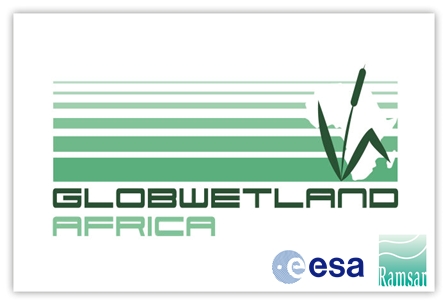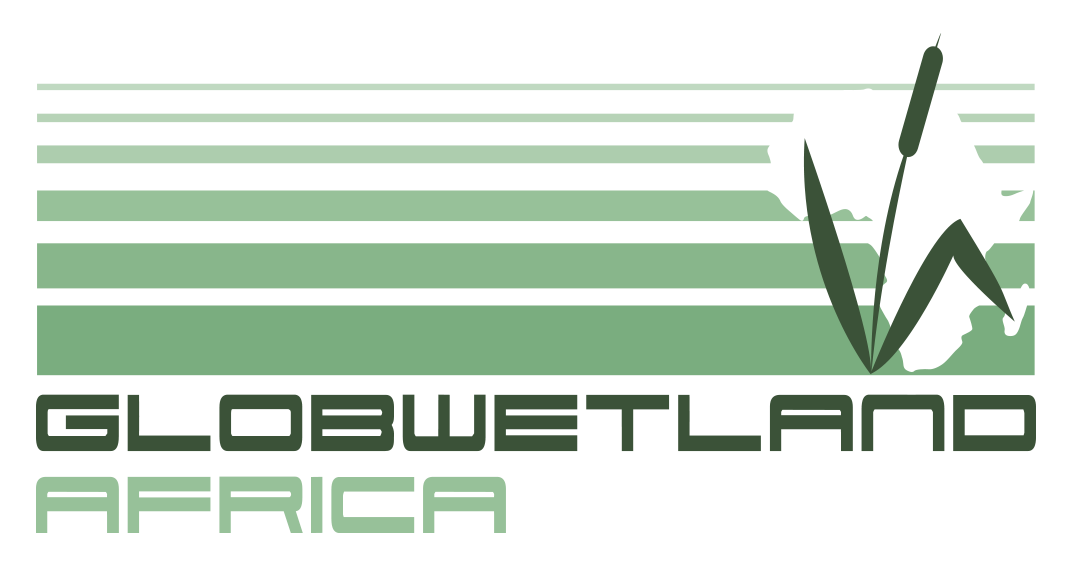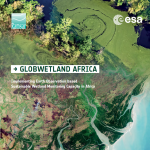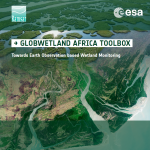GlobWetland Africa is a large Earth Observation application project funded by the European Space Agency (ESA) in partnership with the African Team of the Ramsar convention on wetlands. The project is initiated to facilitate the exploitation of satellite observations for the conservation, wise-use and effective management of wetlands in Africa and to provide African stakeholders with the necessary Earth Observation (EO) methods and tools to better fulfil their commitments and obligations towards the Ramsar Convention on Wetlands.
As a principal objective GlobWetland Africa (GW-A) will be developing and demonstrating an open source and free-of-charge software toolbox for the end-to-end processing of a large portfolio of EO products and the subsequent derivation of spatial and temporal indicators on wetland status and trends, from local to basin scales.

GlobWetland Africa will help African authorities to make the best use of satellite-based information on wetland extent and condition for better measuring the ecological state of wetlands and hence their capacity to support biodiversity and provide ecosystem services. As an ultimate objective, GlobWetland Africa will aim to enhance the capacity of the African stakeholders to develop their own national and regional wetland observatories.
GlobWetland Africa in a nutshell
- Exploit the increasing capabilities of satellite observations for wetlands inventory, assessment, and monitoring
- Develop a free of charge and open source software toolbox to better assess the state and change in wetlands
- Access “freely available” satellite observations from the Sentinel missions of the European Copernicus initiative
- Enhance the capacity of African stakeholders to develop national and regional wetland observatories
The original GlobWetland Africa project (2016-2019) delivered an open source and free-of-charge software toolbox with full end-to-end image processing capabilities for a portfolio of EO products (wetland delineation, wetland habitat mapping, inundation regimes, water quality, mangrove mapping, and river basin hydrology assessments). The information products were demonstrated on a site-by-site basis across wetlands in Africa. During the course of the project, it became increasingly evident that there was a need to support countries in Africa to conduct comprehensive national wetland inventories in order to meet not only their obligations to the Ramsar Convention but also the monitoring and reporting requirements on SDGs.
In response to this need, the GlobWetland Africa extension on wetland inventory was launched in 2019 to leverage the experience of GlobWetland Africa by consolidating the methodological approach on wetland inventories with EO. The ultimate goal was to develop practical EO solutions (i.e. technical guidelines and software tools) that can support Ramsar Contracting Parties (i.e. signatory countries to the Ramsar Convention on Wetlands) to integrate Earth observation into their national systems and processes on wetland inventories and to efficiently report on SDG 6.6.1 on the changes in water-related ecosystems.
The summary and outcome of the GlobWetland Africa extension on wetland inventory can be found here: GlobWetlandAfrica (dhigroup.com)


